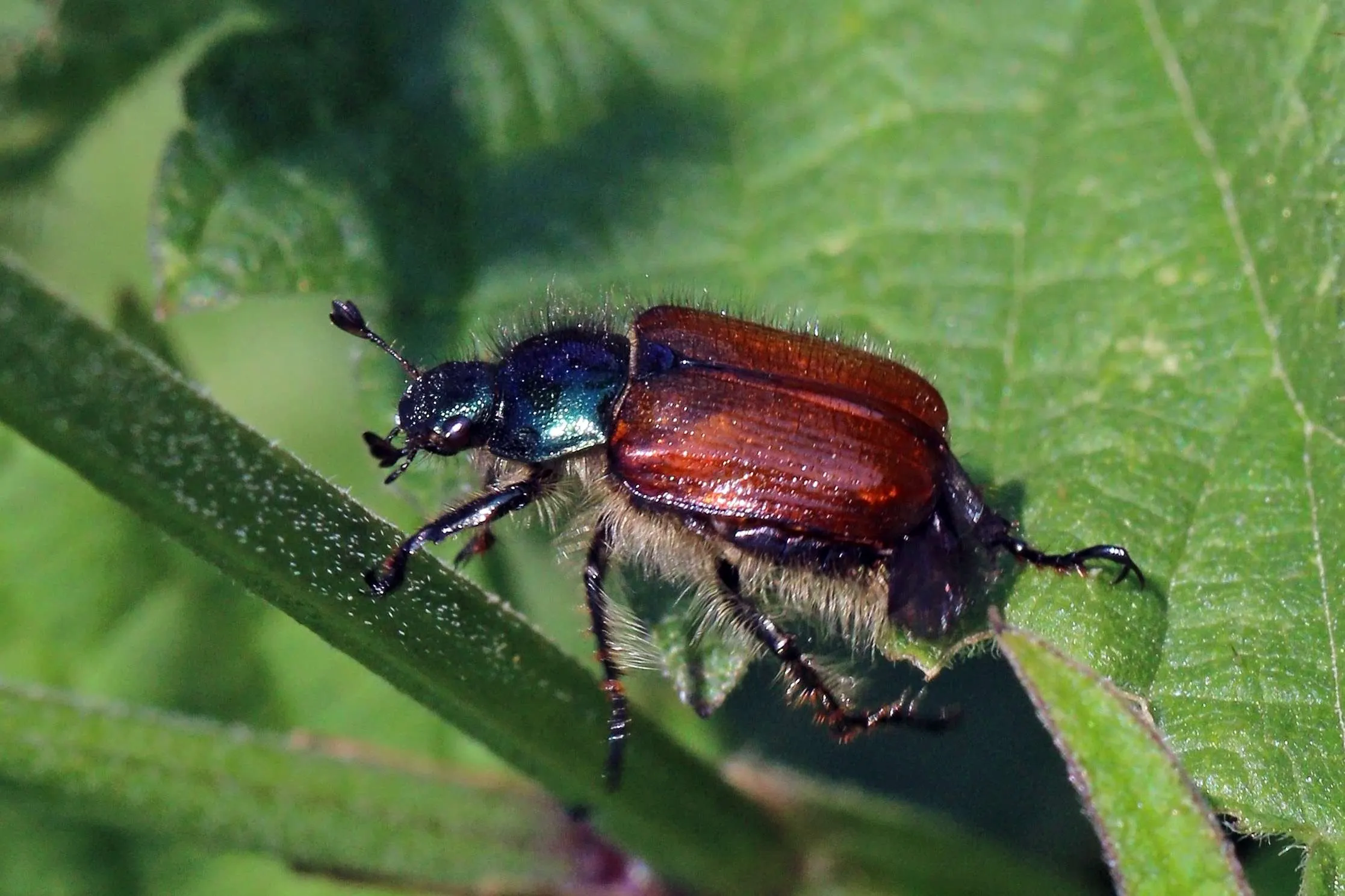Kansas City’s diverse tree population faces numerous pest challenges throughout the year. Understanding these common threats helps homeowners protect their valuable trees and maintain healthy landscapes. The Missouri Department of Conservation emphasizes early detection and proper treatment as keys to successful pest management.
Emerald Ash Borer: The Most Serious Threat
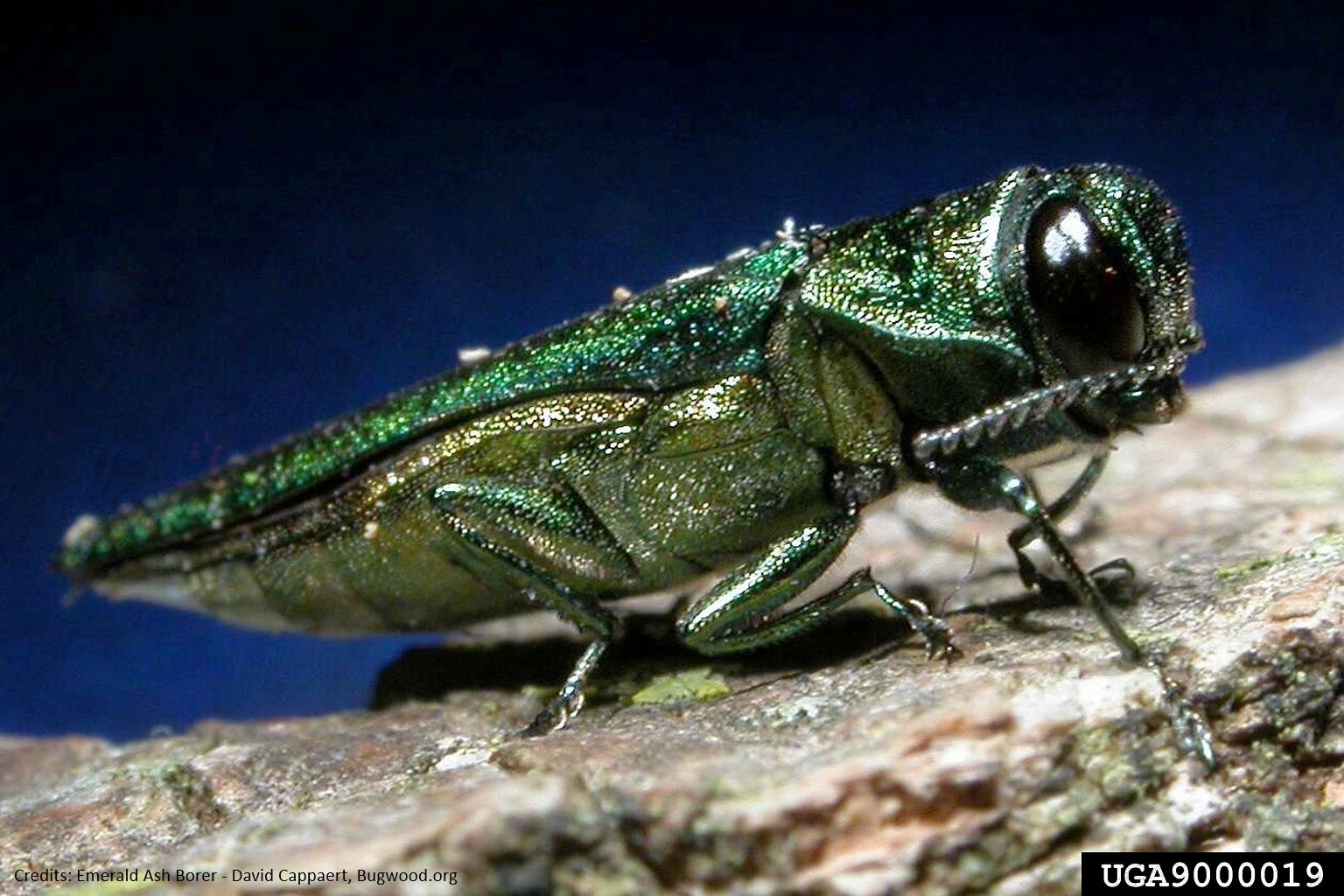
The Emerald Ash Borer (EAB) remains the most devastating tree pest in Kansas City. This invasive beetle has killed millions of ash trees across the Midwest since its discovery. The Kansas Forest Service reports continued EAB activity throughout our region.
This pest’s impact extends far beyond Kansas City, affecting trees from Florida to the Pacific Northwest. The widespread nature of EAB has impacted tree care professionals across North America, including Abbotsford tree service companies like Ruby Tree Care in Abbotsford, BC, who have had to adapt their practices to manage this invasive threat.
Adult beetles emerge in late May through July, creating distinctive D-shaped exit holes in ash tree bark. Larvae feed under the bark, disrupting the tree’s ability to transport water and nutrients. Signs include crown dieback, increased woodpecker activity, and bark splitting revealing S-shaped galleries underneath.
Treatment options include systemic insecticides applied by certified professionals. The Johnson County K-State Extension recommends annual treatments for valuable ash trees, typically applied in spring before beetle emergence.
Japanese Beetles: Summer Leaf Destroyers
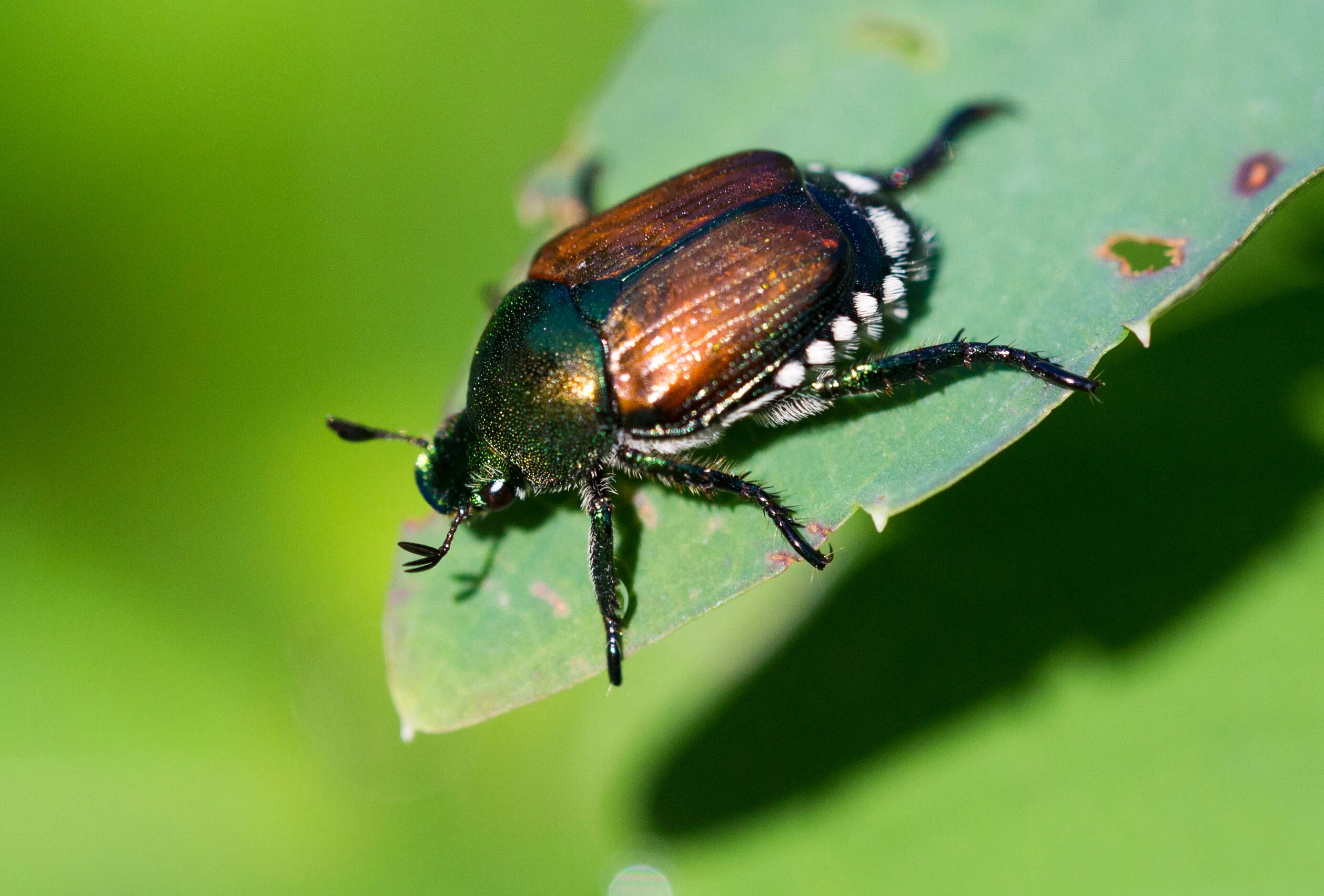
Japanese beetles cause significant damage to many Kansas City trees during their peak activity from June through August. These metallic green beetles skeletonize leaves, leaving only the veins behind. They particularly target lindens, elms, and fruit trees.
The University of Missouri Extension notes that Japanese beetles are most active during warm, sunny days. Adult beetles release pheromones that attract more beetles, leading to concentrated feeding damage.
Management strategies include pheromone traps placed away from valuable trees to draw beetles elsewhere, beneficial nematodes for grub control, and targeted insecticide applications during peak activity periods.
Bagworms: Silent Evergreen Killers
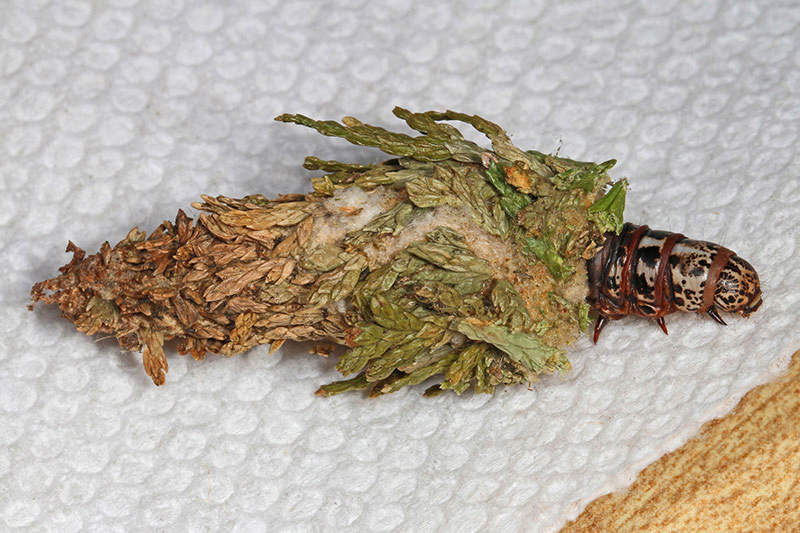
Bagworms pose a serious threat to evergreen trees throughout Kansas City. These caterpillars construct protective bags from host plant material, making them difficult to detect until damage becomes severe. Heavy infestations can defoliate and kill arborvitae, juniper, and spruce trees.
The Kansas State University Extension recommends monitoring for small bags in late spring. Young bagworms are most susceptible to treatment, making early detection crucial. Hand removal of bags in winter provides effective control for small populations.
Biological controls include beneficial insects and Bt (Bacillus thuringiensis) applications in early summer when caterpillars are small and actively feeding.
Scale Insects: Hidden Sap Suckers
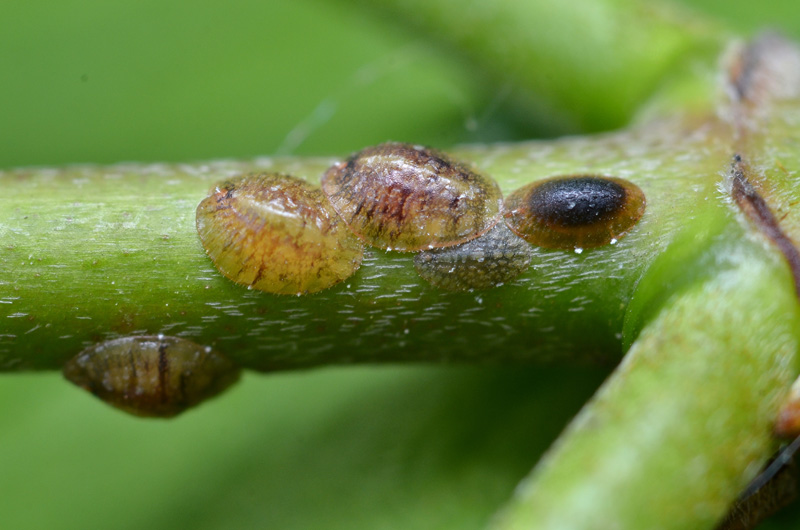
Various scale insects attack Kansas City trees, including soft scales on maples and hard scales on fruit trees. These small insects attach to branches and leaves, sucking plant juices and weakening trees over time.
Signs include yellowing leaves, sticky honeydew deposits, and sooty mold growth. Heavy infestations can cause branch dieback and overall tree decline. The Missouri Botanical Garden provides detailed identification guides for common scale species.
Treatment timing is critical, as scales are most vulnerable during their crawler stage. Horticultural oils and systemic insecticides provide effective control when properly timed.
Aphids: Prolific Plant Parasites
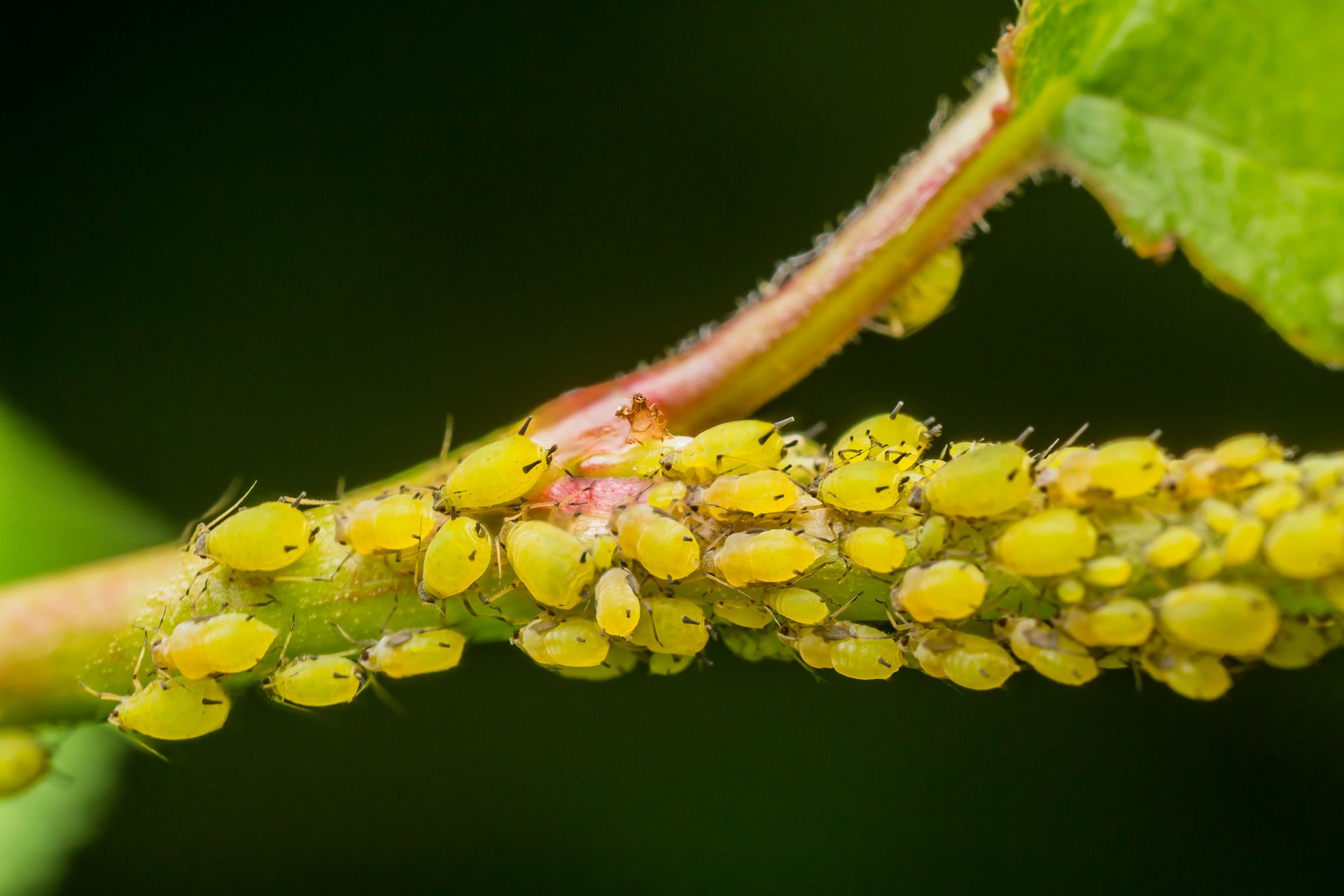
Aphids commonly infest Kansas City trees, particularly during cool, moist spring weather. These small, soft-bodied insects cluster on new growth, causing leaf curling and stunted development. While rarely fatal, heavy infestations stress trees and promote sooty mold growth.
Natural predators including ladybugs, lacewings, and parasitic wasps often provide adequate control. The Kansas City Native Plant Initiative recommends encouraging beneficial insects through diverse plantings.
For severe infestations, insecticidal soaps or horticultural oils offer effective, environmentally friendly control options.
Borers: Internal Tree Threats
Several borer species attack stressed or weakened trees in Kansas City. Bronze birch borer targets birch trees, while two-lined chestnut borer affects oak trees under drought stress.
Prevention focuses on maintaining tree health through proper watering, mulching, and avoiding mechanical damage. The Tree Care Industry Association emphasizes that healthy trees can often resist borer attacks naturally.
Treatment options include systemic insecticides for high-value trees and proper cultural practices to reduce tree stress.
Integrated Pest Management Approach
Successful pest management combines multiple strategies:
Monitoring: Regular inspections help detect problems early when treatment is most effective. The International Society of Arboriculture recommends annual professional assessments.
Cultural Controls: Proper watering, mulching, and pruning maintain tree health and resistance to pests. Removing fallen leaves and debris eliminates overwintering pest sites.
Biological Controls: Encouraging beneficial insects and using biological pesticides when appropriate reduces reliance on chemical treatments.
Chemical Controls: When necessary, targeted pesticide applications by certified professionals provide effective pest control while minimizing environmental impact.
Prevention Strategies
The best defense against tree pests involves proactive care:
Maintain proper soil moisture through deep, infrequent watering during dry periods. Apply 2-4 inches of organic mulch around trees, keeping it away from trunks to prevent moisture-related problems.
Schedule regular pruning to remove dead or damaged branches that attract pests. Avoid wounding trees during construction or landscape activities, as fresh wounds provide entry points for many pests.
When to Call Professionals
Contact certified arborists when you notice:
- Unusual leaf discoloration or early drop
- Visible insects or egg masses on trees
- Holes in bark or sawdust around tree bases
- Declining tree health despite proper care
- Unknown pest identification needs
Professional treatment ensures proper pest identification, appropriate treatment selection, and safe application methods. Many pest problems require specialized equipment and restricted-use pesticides available only to licensed applicators.
Seasonal Pest Calendar
Understanding when pests are active helps with timing treatments and monitoring efforts:
Spring: Monitor for scale crawlers, emerging borers, and early aphid populations Summer: Watch for Japanese beetles, bagworm activity, and drought stress that attracts borers Fall: Apply preventive treatments for next year’s pests and remove overwintering sites Winter: Hand-remove bagworm cases and plan treatment strategies for the coming year
By staying vigilant and working with certified professionals when needed, Kansas City homeowners can protect their trees from these common pests and maintain healthy, beautiful landscapes for years to come.
Frequently Asked Questions
Emerald Ash Borer, Japanese Beetles, and Bagworms are among the most destructive pests in our area. These can cause significant damage or death to trees if left untreated.
Prevention is key. Most treatments are most effective in early spring before pest emergence. However, timing varies by pest species and treatment type.
While some minor pest issues can be handled by homeowners, serious infestations often require professional treatment with specialized equipment and pesticides.
Maintain tree health through proper watering, mulching, and pruning. Healthy trees are more resistant to pest damage. Regular inspections help catch problems early.
When applied by certified professionals following label instructions, pest treatments are safe. We use integrated pest management approaches that minimize chemical use.
